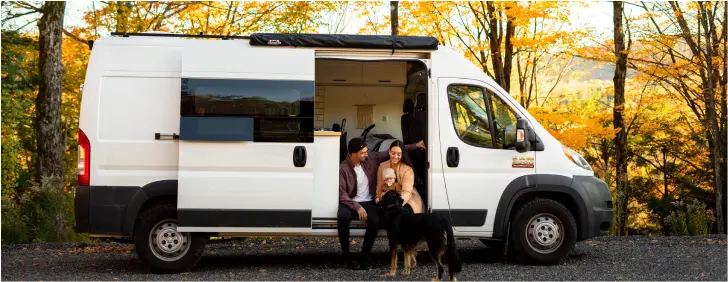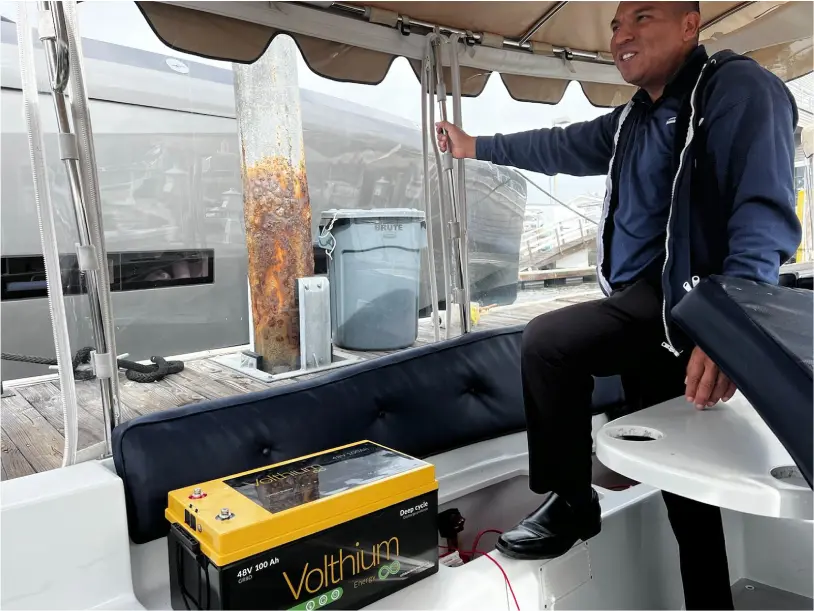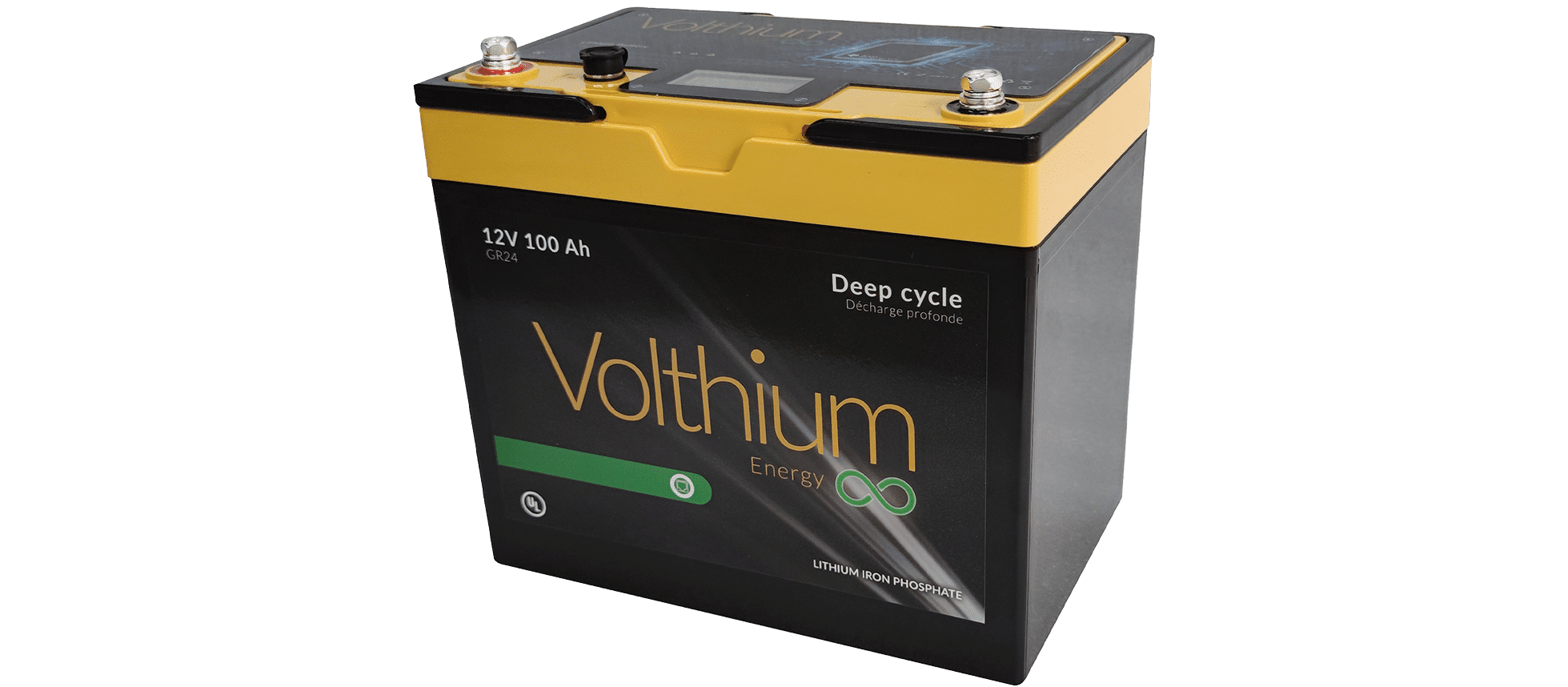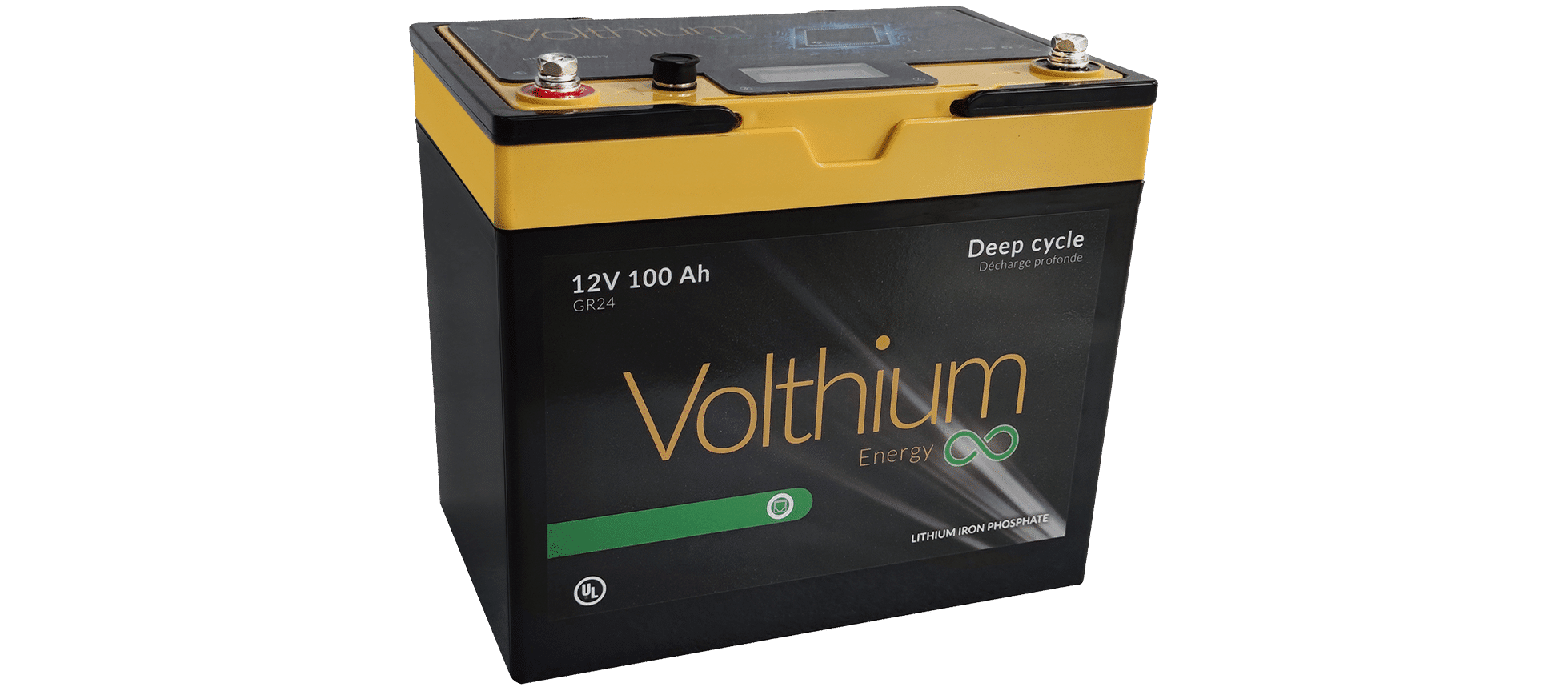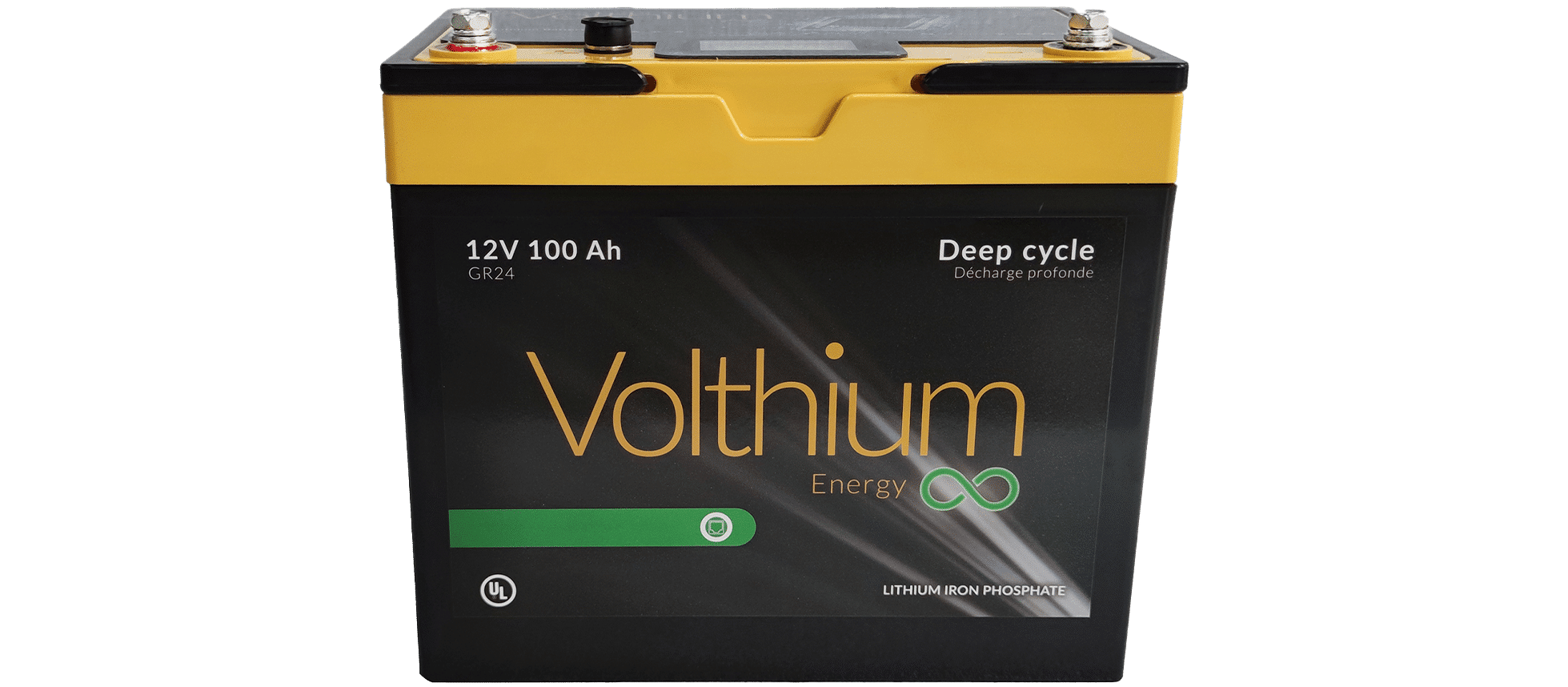WEIGHT
5.2X lighter than a 100Ah lead-acid battery
CONCEPTION
100%
Canadian
PROFITABILITY
2.6X more economical (15-year actual cost of ownership)
KEY FEATURES
1 COMMUNICATION PORT
XLR (compatible with Volthium accessories)
DISCHARGE CURRENT
Continuous 100 A Peak 200 A (30S)
LCD DISPLAY
MANAGED BY BMS
BMS
Reserved room, easy to access
WEIGHT
25 LBS 11.34 KG
10 YEARS
LIMITED
WARRANTY
COLD CHARGE PROTECTION
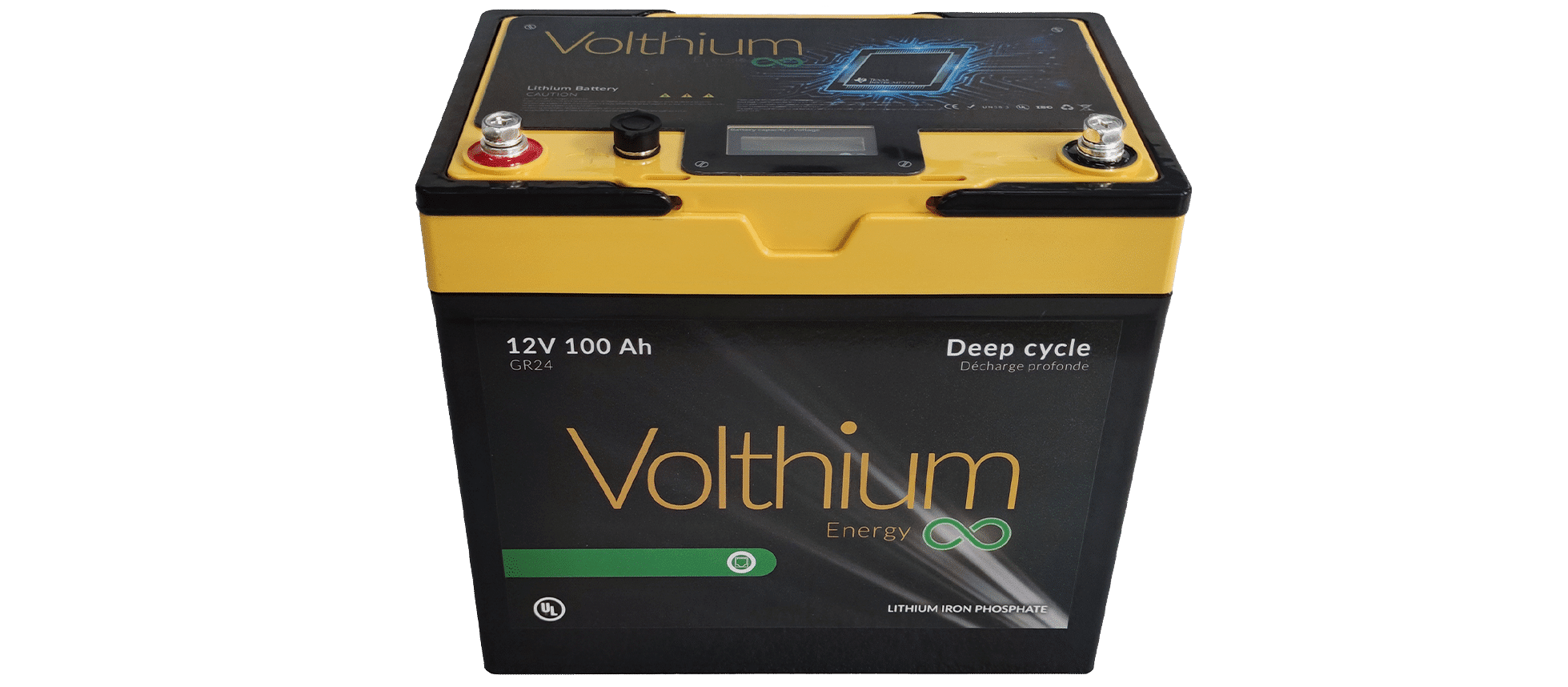
DESCRIPTION
This battery model includes cold charge protection (Low Temp Cut-Off) in a more compact format (Group 24) while delivering the same power as Group 31.
A 100% Canadian design, maximizing the energy-to-space ratio.
This model features an LCD screen, with charge status management controlled by the BMS. This exclusive feature represents a major improvement over the competition.
Note: The display managed by the BMS will be calibrated after two full deep discharge/recharge cycles.
The BMS is easily accessible, ensuring an extended lifespan for the entire battery bank. In the event of accidental misuse, the battery remains repairable, preventing the need to replace the entire battery bank due to a single faulty unit.
Additionally, the BMS is isolated in a dedicated chamber, allowing the battery’s operating temperature range to be extended. This prevents the heat generated by the BMS from affecting the cells.
Access to the BMS also allows for the addition and customization of parameters over time.
Our BMS technology, powered by Texas Instruments, is specially designed to withstand Canada’s harsh environmental conditions. Combined with our Grade A+ cells (from a supplier renowned for its contracts with LG Chem, Audi, BMW, and Tesla), we ensure you get the best lithium battery in North America.
Easy and quick to install, our lithium batteries are twice as light as conventional batteries, providing a shorter charging time and a sustained energy capacity that does not degrade over the years.
At Volthium, our mission is to assemble the finest components from the most advanced industries to create the best batteries: cells, BMS, assembly engineering—everything is optimized.
Never before has a lithium battery delivered such outstanding performance as those in our product line.
A guaranteed profitability for at least 10 years, and certainly beyond!
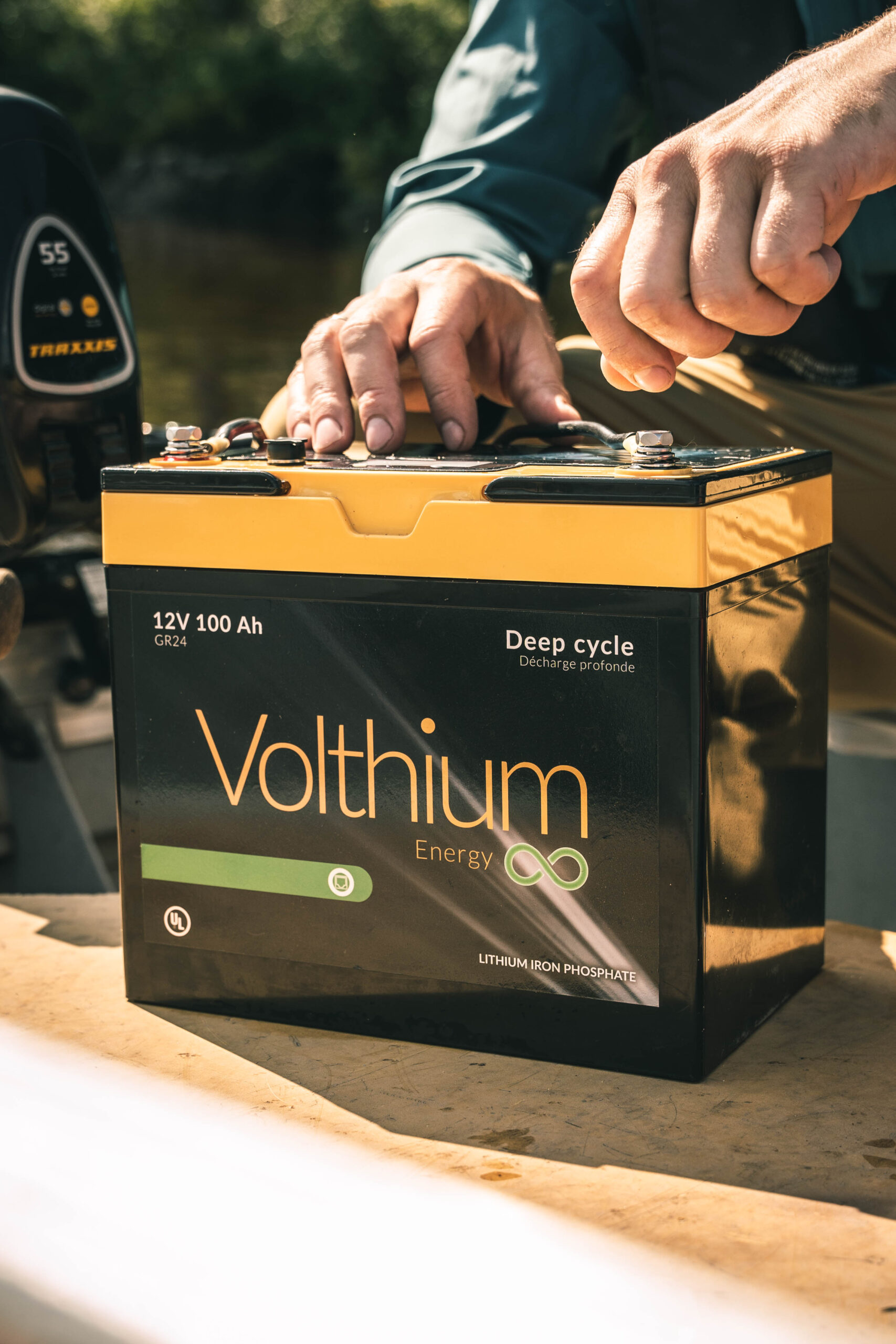
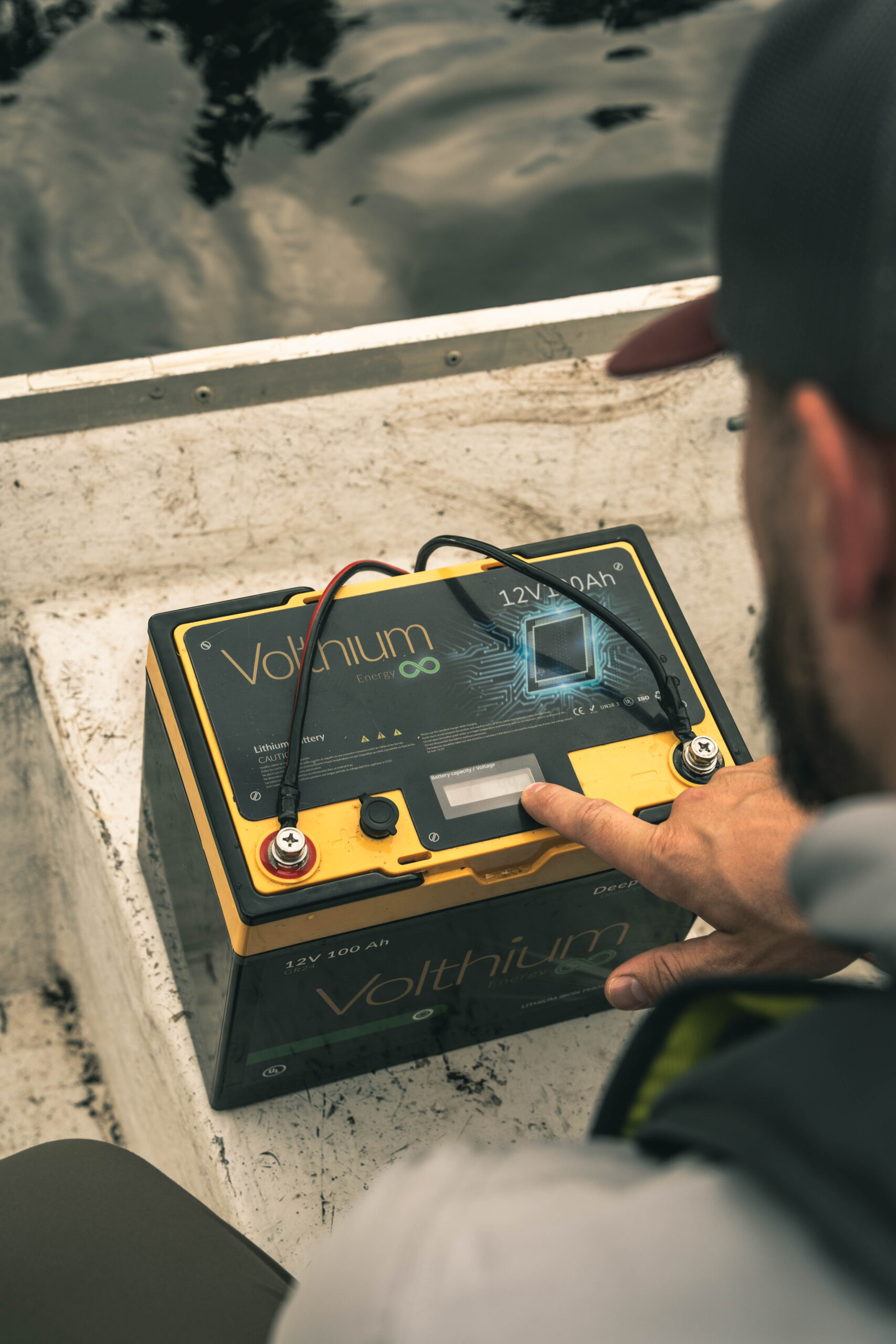

INCLUDED

12V 100Ah battery
Lithium batteries are one of the most common energy storage technologies today, widely used in a variety of applications, from electric and recreational cars (RVs), water vehicles, solar storage banks, medical and industrial applications. The basic principle of their operation is the mobility of lithium ions between the two electrodes: the anode (negative electrode) and the cathode (positive electrode), via an electrolyte.
- Composition: Lithium batteries are typically made up of three main components: the anode, cathode, and electrolyte. The anode is usually composed of carbon, most often in the form of graphite. The cathode of LifePO4 batteries such as the ones we manufacture is made of lithium iron phosphate, iron phosphate promotes a strong molecular bond, which withstands extreme load conditions, extends service life, and maintains chemical integrity over many cycles. For other lithium batteries, the cathode is usually composed of a lithium metal compound, such as lithium cobalt, lithiated manganese, lithium nickel, or a mixture of these elements. The electrolyte is a chemical substance that allows lithium ions to pass between the anode and the cathode. At Volthium, we believe that LifePO4 batteries are the best alternative for different reasons.
- During charging: When the battery is charged, i.e. when the current is applied, the lithium ions move from the cathode to the anode via the electrolyte. During this process, lithium ions are “inserted” into the anode structure, a process called intercalation.
- During discharge: When the battery is used to power a device, i.e., when it is discharged, lithium ions move from the anode to the cathode, a process that releases energy. The mobility of lithium ions from the anode to the cathode is what generates the energy needed to power the device.
- Capacity and durability: The capacity of a lithium battery is determined by the amount of lithium it can store, which in turn determines how much energy it can provide. However, it is normal for the capacity of a battery to decrease over time, a phenomenon known as battery degradation. This is due to several factors, including temperature, overcharging and discharging, and general battery usage. However, thanks to the quality of our batteries and in particular our grade A+ cells, our batteries are guaranteed for 10 years and offer a lifespan of about 15 years.
LiFePO4 batteries, known for their lithium iron phosphate composition, are distinguished by their durability and superior energy capacity, especially in demanding applications such as recreational vehicles (RVs), trailers, and cottages. In Canada, where the search for reliable and sustainable energy solutions is constant, lithium LiFePO4 batteries are increasingly preferred over traditional lead-acid batteries, thanks to their long lifespan that can reach up to 3000 cycles at 100% discharge without significantly damaging the remaining capacity of the battery.
Volthium offers a range of 12V and 200Ah LiFePO4 batteries, equipped with grade A cells guaranteeing optimal efficiency. These batteries offer a shorter charging time and greater energy capacity, making the installation of a solar panel for energy storage even more cost-effective. Their high charge rate and stable voltage allow any electrical equipment to be efficiently powered, without the risk of overheating, thanks to the intrinsically safe lithium iron phosphate technology.
There are several types of lithium batteries, which are usually differentiated by the material used for the cathode (the positive electrode). The most common types are lithium cobalt (LiCoO2), lithium manganese (LiMn2O4), lithium nickel manganese cobalt (NMC), lithium nickel cobalt aluminum (NCA), and lithium iron phosphate (LiFePO4 or LFP) batteries. Volthium batteries are Iron Phosphate batteries known as LiFePO4 and LFP which are a kind of lithium-ion battery. They differ from other types of lithium batteries in their use of iron-phosphate for the cathode, rather than cobalt or nickel. They are said to have the following qualities:
- Safety and stability: LFP batteries are known for their safety and superior thermal stability. Compared to other types of lithium batteries, they are less likely to overheat or catch fire if malfunctioned or misused. This increased safety is due to the intrinsic stability of iron phosphate.
- Durability and life cycle: They also have a long service life and can maintain a high load capacity even after many charge and discharge cycles. They have a low self-discharge rate, which means they can hold their charge for long periods of time without use. Our products offer more than 6000 cycles and have a service life of about 15 years.
- Environmental performance: In comparison, LFP batteries have a potentially lower environmental impact. Iron is more abundant and less toxic than cobalt and nickel, and iron mining has a lower environmental impact. In addition, LFP batteries are easier to recycle than other types of lithium batteries.
Reducing our dependence on fossil fuels, improving air quality, managing e-waste more responsibly ; Lithium batteries have had a significant positive impact on the environment, playing a critical role in the transition to a cleaner and more sustainable society. Their increasing adoption in various areas, such as electric vehicles and renewable energy storage, has helped to significantly reduce greenhouse gas emissions from transportation and power generation.
Lithium battery recycling has also become more efficient, allowing valuable materials such as lithium, cobalt, and nickel to be recovered and reused in new batteries or other applications.
DO YOU NEED
HELP IN DECIDING?
The best battery for your unique needs.
